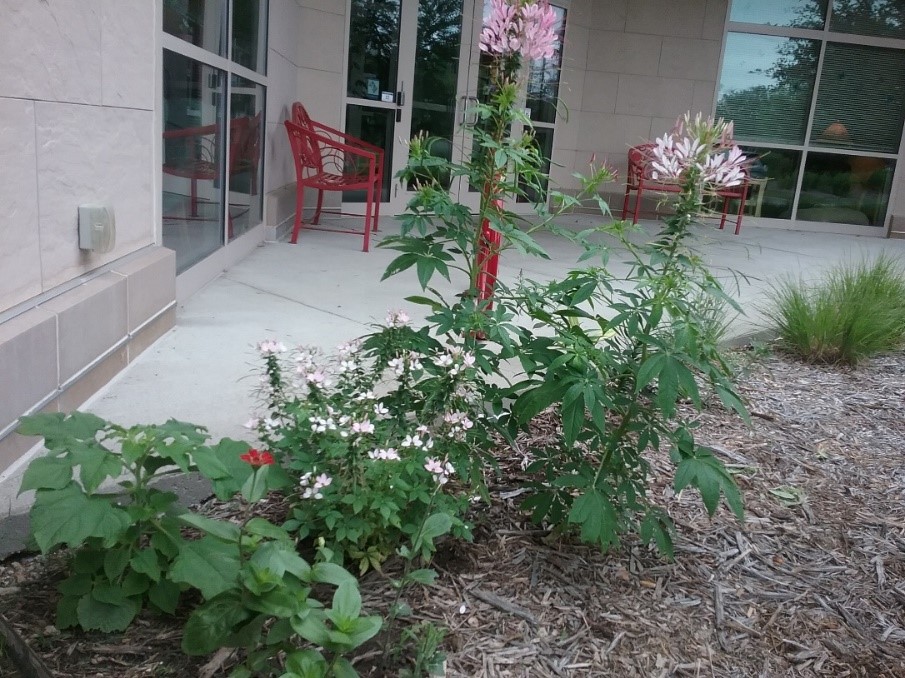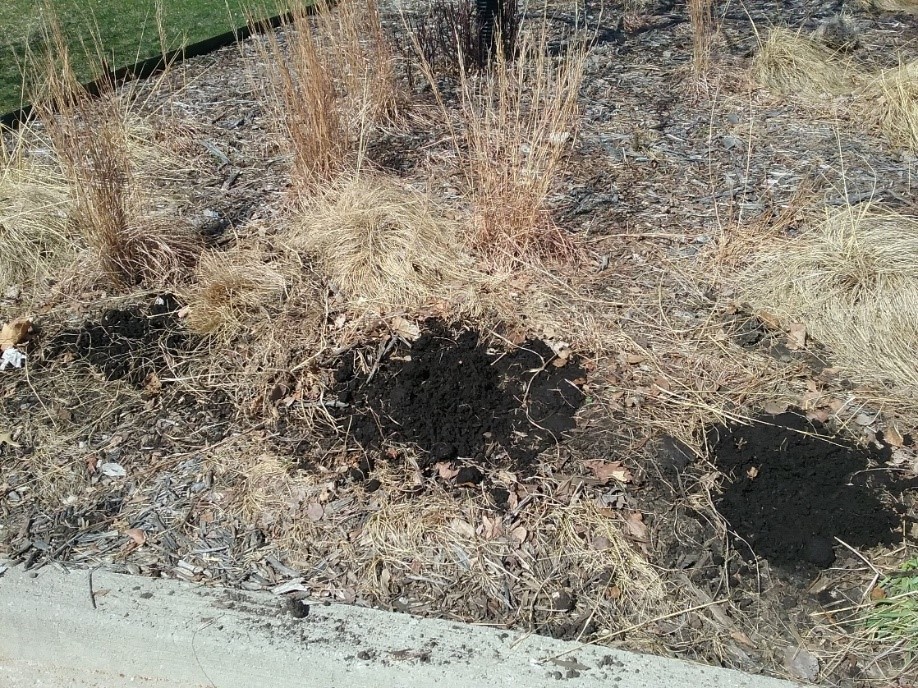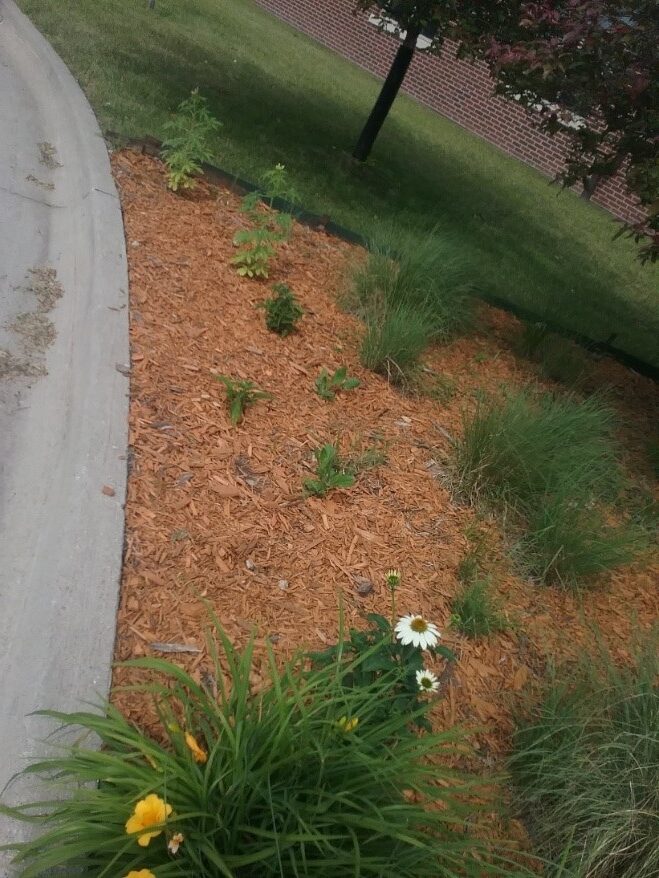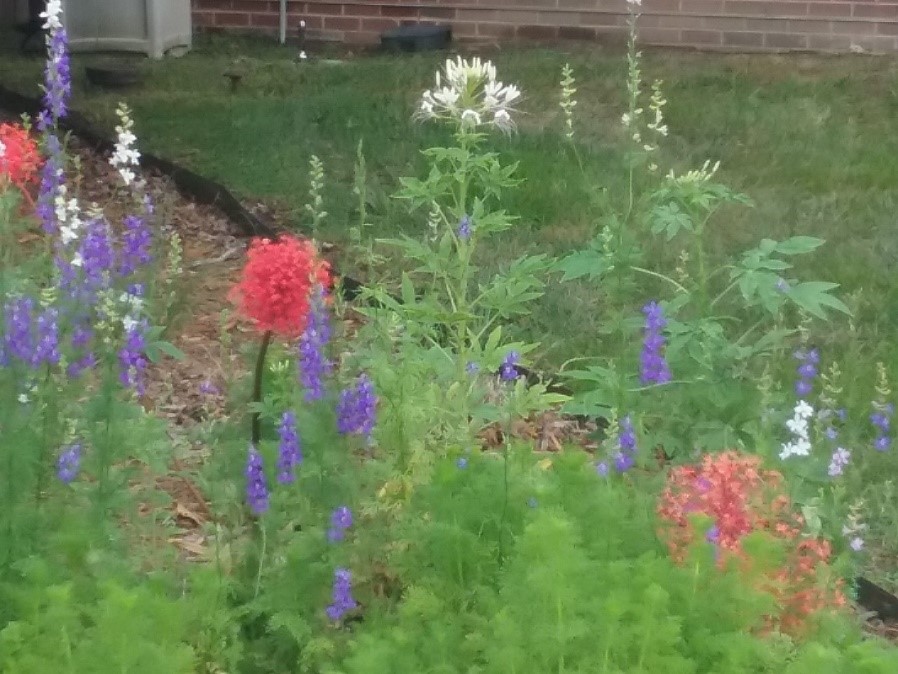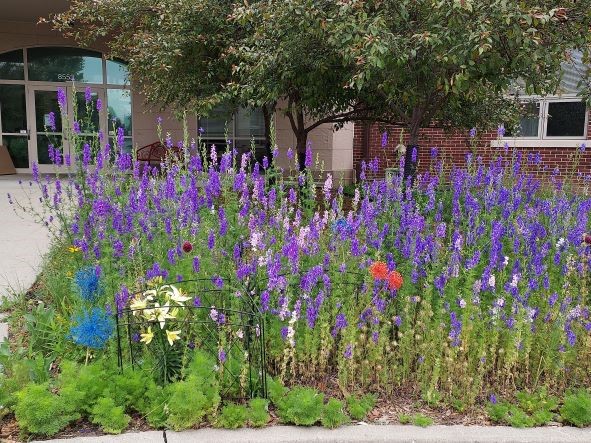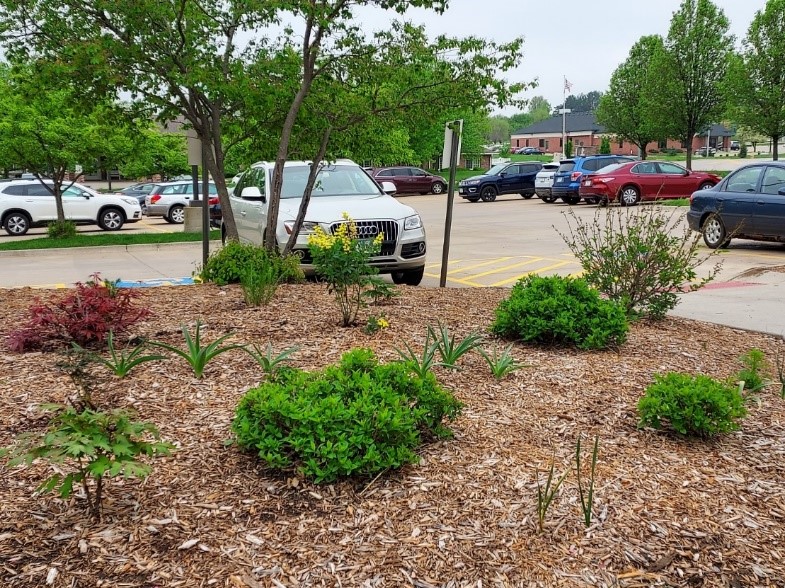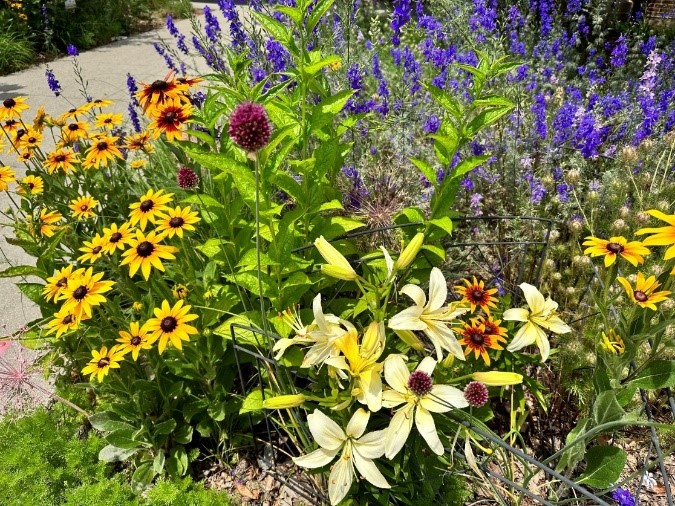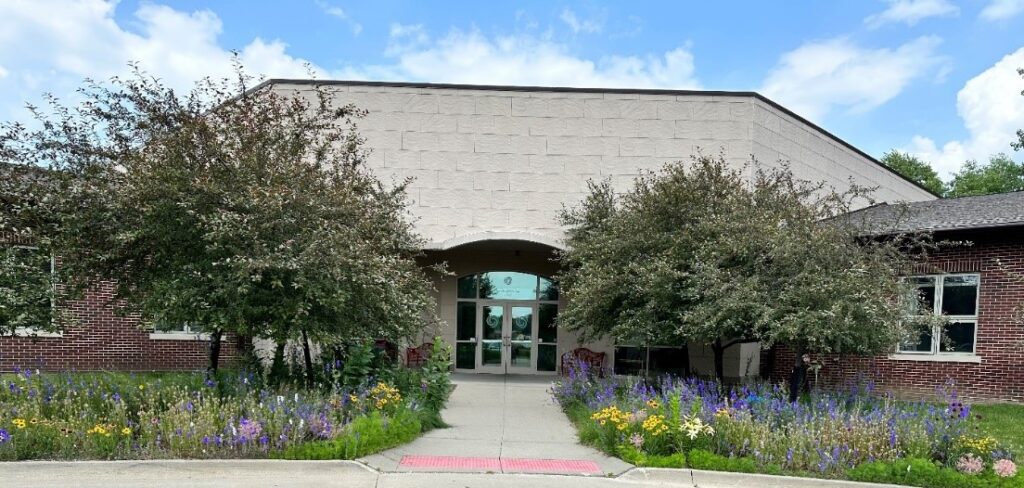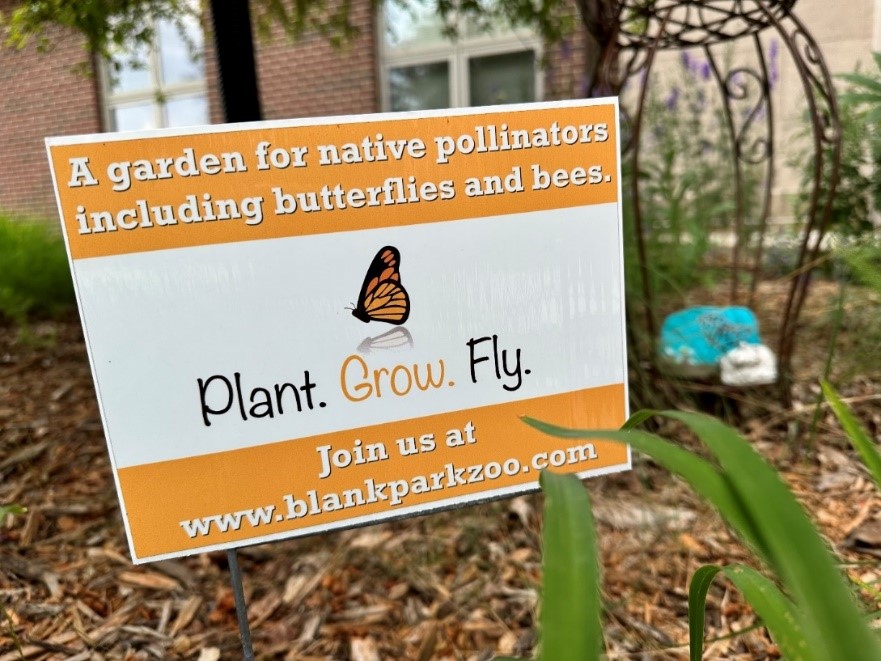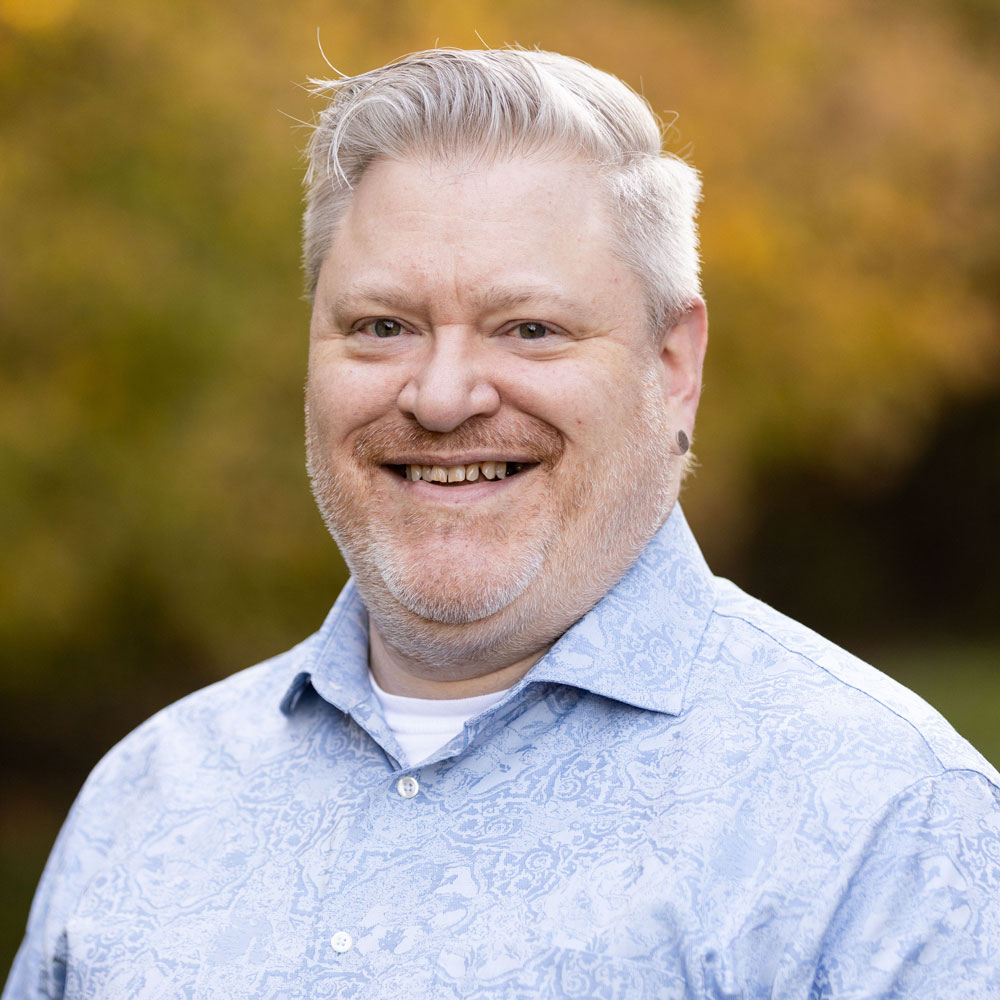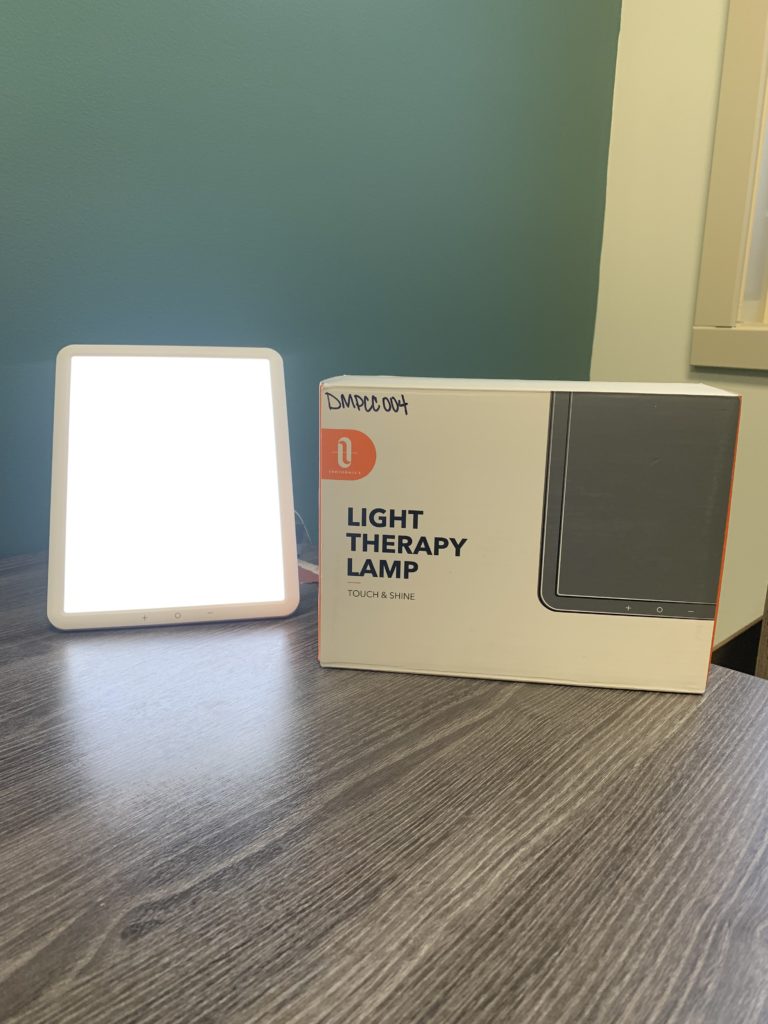The Evolution of Mind & Spirit Center’s Garden
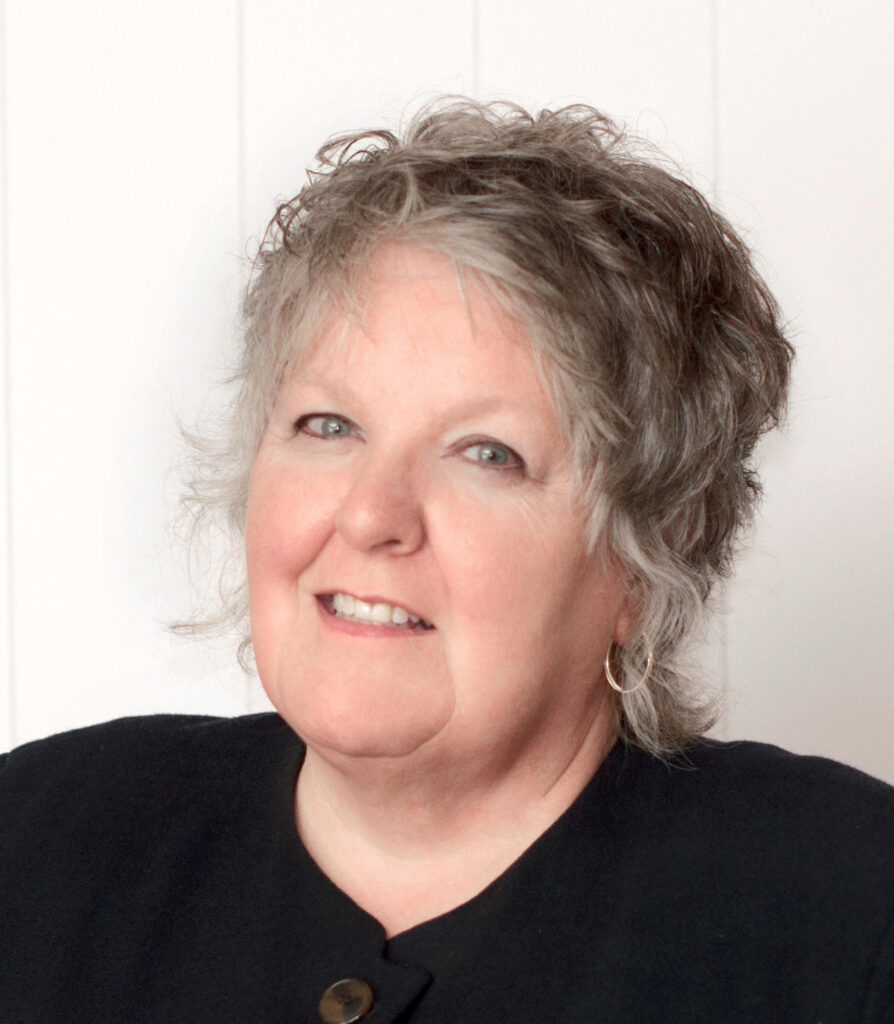
It started in August 2018. My best friend, Sally Wood, was serving on the Board of Directors at the formerly-named Des Moines Pastoral Counseling Center and asked me to meet the new Executive Director, Jim Hayes, to discuss whether I might be interested in maintaining the Center’s four garden beds. Jim was frustrated about how thistles had overtaken the garden and the battle of containment with weed mat. So began my journey as the Center’s volunteer gardener.
My first priority was to get rid of the thistles. There were two beds inside the circle drive, one with a field of ornamental grasses and the other with three ornamental trees and mulch. I quickly saw that the real culprit was inside the ornamental grasses bed with lots of thistles blooming and casting seeds. I remember toting large garbage bags full of pulled thistles to the garbage bin week after week and it seemed endless. But eventually, containment was achieved.
Now that the thistles were on their way to being controlled, I needed to come up with a plan. It was clear that the beds originated with a vision and care and expense were taken to create the berms. So how do I move forward with an expansion of that vision?
With a blank slate on the north berm, it seemed that a good balance to the ornamental grass berm called for shrubs that would provide interest and take up space there. After meeting with Penny Heiss (former Operations Director), Terri Mork Speirs (former Director of Community Relations) and Jim, hydrangeas and elderberry were planted in what would become known as the “shrub berm” in the spring of 2019.
I later met with Penny to draw a bead on the Center’s vision for the garden. Her direction was simple and clear, “You do whatever you want, Lois. I trust you.”
Those words made me spring into action. A very small butterfly garden was planted outside the south waiting room windows with around five plantings that brought color through the summer into the fall and drew pollinator interest. Weeds were still the most effort but a fraction of the past. Once Penny saw the color, butterflies and bees, her direction expanded and asked that I “create as many blooms as you can”.
In September 2019, I heard a presentation from the Blank Park Zoo about their Plant Grow Fly program to promote pollinators in home gardens, which protects plant food sources for the animals (us too). I also heard about the Children Overcoming Obstacles of Life (C.O.O.L.) program at the Center that shepherded interest in the Monarch butterfly life cycle.
That’s why all the milkweed! Talk about divine intervention. Learning about the C.O.O.L .program within weeks of hearing about the Plant Grow Fly program seemed serendipitous. The Plant Grow Fly program asks participants to register their gardens through their website using a list of plants that qualify for pollinators. Once I did that for my garden, I met with Penny to go over what we needed to do to create this pollinator environment at the Center.
That fall, Sally, Penny and I dug up grasses at the edge of the front entryway to make room for pollinator flowers. In 2020, pollinator plants were added and we were able to register the Center’s garden with the Zoo and now the Plant Grow Fly sign is displayed by the original butterfly garden.
In the ensuing years, more flowering shrubs have been added to the shrub berm, including Japanese tree peonies, Baptisia and Amsonia. This berm now sports a Japanese maple tree donated by Sally. All of these plantings are unconventional for commercial property but are intended to catch the visitor’s eye. Allium bulbs have been added to the shrub berm and throughout the pollinator beds. Each year these spring blooms are eventually spray painted by staff to continue color for another couple of weeks. This is a trick I’ve learned from Master Gardeners and is quite unexpected by the passerby. While the thistles have been eradicated and pollinators are visible throughout the beds, the gardens are ever-changing.
I hope this may inspire you to think about a pollinator garden at home. Thank you to Sally, Jim and Penny for this opportunity to conquer, create and share. Purpose realized. Happy Planting!
To learn what to and how to register your garden, please visit Blank Park Zoo Garden Registration.

